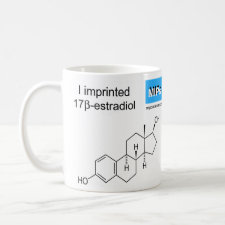
Authors: Gour D, Krupadam RJ
Article Title: Highly Sensitive Analysis of Endocrine Disrupting Chemicals in Pharmaceutical Wastes using Molecularly Imprinted Polymer Extraction hyphenated with Liquid Chromatography-Mass Spectrometry.
Publication date: 2014
Journal: Enliven: Bio analytical Techniques
Volume: 1
Issue: (2)
Page numbers: ArticleNo4.
Alternative URL: http://enlivenarchive.org/bioanalytical-1-2-004.html
Abstract: Environmental loading of endocrine disrupting chemicals (EDCs) that originate from pharmaceutical wastes are known to cause adverse impacts on aquatic life and public health. In this article, a new sensitive method has been proposed for quantification of EDCs in complicated pharmaceutical wastes using a molecularly imprinted polymer (MIP) extraction followed by liquid chromatograph-mass spectrometer (LC-MS) analysis. The calibration curves of EDCs showed linearity in the concentration range of 1-100 μg L-1 (r>0.996) with a 10 mL loading of pharmaceutical waste samples. The EDCs recoveries obtained by the MIP for pharmaceutical effluents, air particulates and treated sludge were 91%, 89% and 84%, respectively; and the recovery values were better than the conventional SPE materials such as powdered activated carbon and resin. The quantification of 17β-estradiol, a model EDC molecule, using LC-MS showed an excellent lower limits of detection in the pharmaceutical effluents, air particulates and solid waste in the order of 0.19 μg L-1, 0.13μg g-1, 0.12μg g-1, respectively.
Template and target information: 17β-estradiol, E2
Author keywords: Endocrine disrupting chemicals, Molecularly imprinted polymers, solid phase extraction, Pharmaceutical wastes, LC, MS analysis



Join the Society for Molecular Imprinting

New items RSS feed
Sign-up for e-mail updates:
Choose between receiving an occasional newsletter or more frequent e-mail alerts.
Click here to go to the sign-up page.
Is your name elemental or peptidic? Enter your name and find out by clicking either of the buttons below!
Other products you may like:
 MIPdatabase
MIPdatabase









